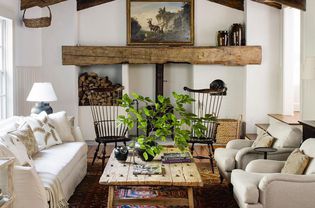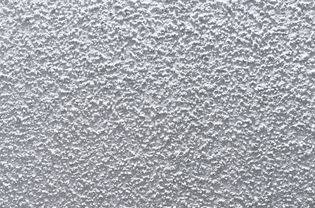If you’re going for a rustic, farmhouse or even industrial vibe in your home, shiplap is a go-to. The wooden slats add style and texture to any space, so it’s the perfect choice when you want something more interesting than a paint color, but not as busy as wallpaper. With shiplap, you don’t even need to worry about wall decor to make your space beautiful.
Shiplap has exploded into the interior design world in recent years, partially thanks to its prevalence in Magnolia Home spaces (Joanna and Chip Gaines even have a shiplap wallpaper design and a shiplap-inspired paint collection). But there’s something you might not know: there are many different forms of not-quite-shiplap panelings, and some homeowners might not even realize that what they have on their walls isn’t the real deal.
We spoke with Amanda Friemel, interior designer at Duet Design Group, about what characteristics define the paneling and how you can ID true shiplap from the knockoffs.
-
01 of 04
True Shiplap Has ‘Rabbets’
The number one thing that distinguishes true shiplap from other styles of wood paneling, such as wainscoting or beadboard, are the “rabbets.” These are flat, 90-degree grooves on either side of each wooden plank. When installing shiplap, these notches are slotted together, giving the shiplap its characteristic gaps.
In short, if your wooden paneling doesn’t have these rabbets, it’s not actually shiplap.
“Faux shiplap is anything that looks like true shiplap, but doesn’t include those flat 90-degree grooves,” Friemel says. “They can be flat boards like two-by-fours, or even peel-and-stick or anything with tongue and groove. Those would all be faux shiplap.”
-
02 of 04
True Shiplap Is Heavy
![shiplap made from real wood]()
dlinca / Getty Images
Unlike some faux varieties, true shiplap is always made from real wood, typically pine. This can make installing it yourself tricky, especially if you’re paneling an entire wall. Friemel recommends faux shiplap if anyone is planning self-installation.
“It’s real wood, and so it’s heavier,” she says. “It’s easy to get off-line on one side.”
If you are set on true shiplap and installing it on your own, Friemel says to make sure you have lots of hands to help out.
-
03 of 04
True Shiplap Looks Handmade
So how can you tell if a wall is true shiplap after installation, when the rabbets are no longer obvious? Friemel says it can be tricky.
“From the outside, a lot of those faux-shiplaps look exactly like a true shiplap,” she says. “It’s really hard to tell.”
Here’s one trick: look closely at the gaps between boards. Because of the distinctive rabbet joints, shiplap must be installed by hand. This hand-crafted feel, Freimel says, is difficult to replicate with other types of paneling.
“Since true shiplap has those specific grooves, they do have a little bit more of a handmade look,” she says. “Anything that’s faux shiplap is more machine-made. If it has perfectly straight machine lines, that’s kind of how you can tell from the outside if it’s faux shiplap.”
-
04 of 04
True Shiplap Gets Better With Age
![shiplap in an older home]()
Trinette Reed / Stocksy
As the name suggests, the paneling was first used to waterproof ships. In the early 1900s, it started being used to rain-and-wind-proof homes and barns.
Shiplap in interior design became associated with humble beginnings—namely, little cottages and cabins. Friemel says if you own a historic house from the turn of the century, chances are you can find shiplap underneath any old wallpaper. And even after all this time, it can still look gorgeous.
“[Shiplap] will work and change over time, will age beautifully and it looks really good after scratches and dings,” Friemel says.
The key to keeping shiplap beautiful is proper care. Using a gentle wood cleaner gets the job done for both newly installed shiplap and any that you might find hidden in your walls. Friemel says to make sure you don’t use anything with strong chemicals that can strip the wood.
But for newer shiplap, regular dusting will keep the wood looking good and grime-free.
:max_bytes(150000):strip_icc()/headshot-43eda540c7fa4352b9493d3523a7731a.jpg)
:max_bytes(150000):strip_icc()/Stocksy_txp1293f10bVQz200_Small_1183974-0b1c4612573d459ea5938908d7f8fd1b.jpg)
:max_bytes(150000):strip_icc()/GettyImages-1089793566-ccbda19ef8ec4070a947819ed4887a00.jpg)
:max_bytes(150000):strip_icc()/Stocksy_txp00265ee4CTc200_Medium_2759032-c6489ccb35c3488b9a24f0cbf35e9642.jpg)


